A few days ago, walking around Namche I met an old man, who was walking slowly, dressed elegantly in the traditional way of Sherpas and who was praying while reciting the mantras he was counting with the balls of the threng-nga, a kind of rosary used by Buddhists.
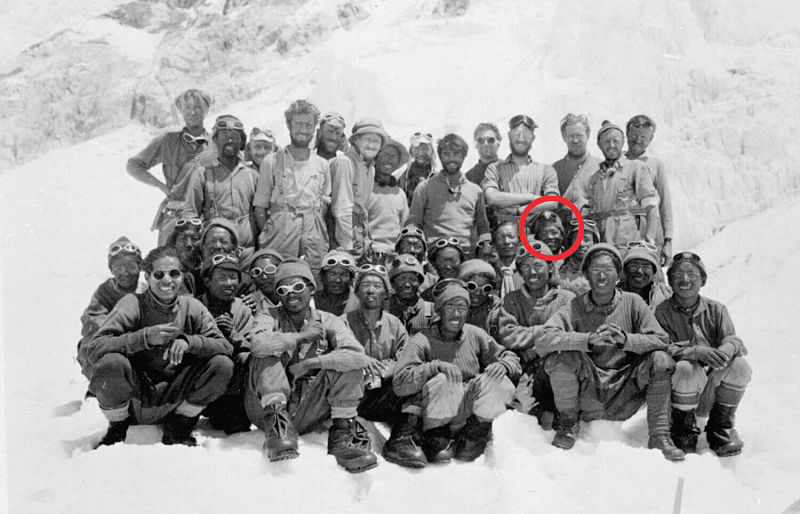
His face was familiar to me and after a few seconds of doubt (I am a very bad physiognomist) I remembered some photos of him that I had seen, and realized that he was Kanchha Sherpa, the last living member of the team of 103 Sherpas and 13 mountaineers who took part of the expedition that reached the summit of Everest for the first time, on May 29, 1953.
We greeted each other and exchanged a few words of introduction, took a few photos, and agreed to meet one day at his house to talk quietly. And each of us followed our own way on that so sunny autumn morning.
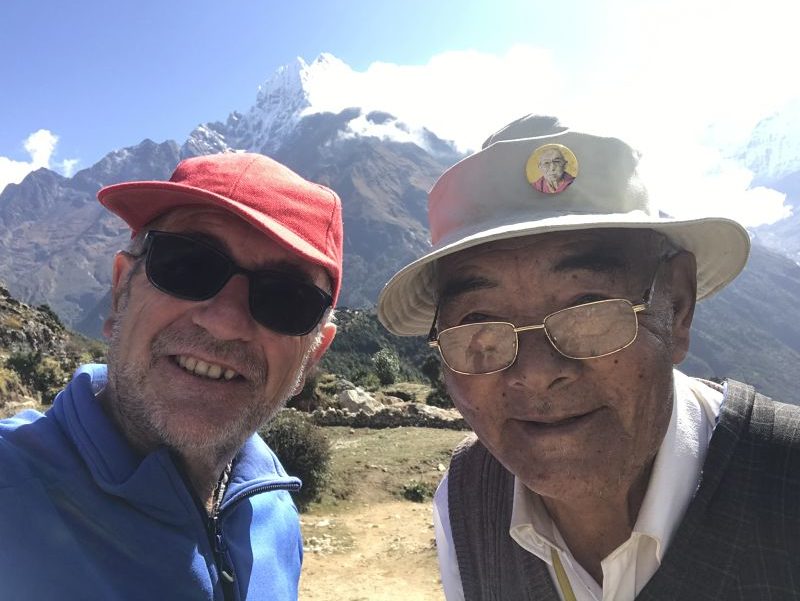
My first encounter with Kanchha, in Namche 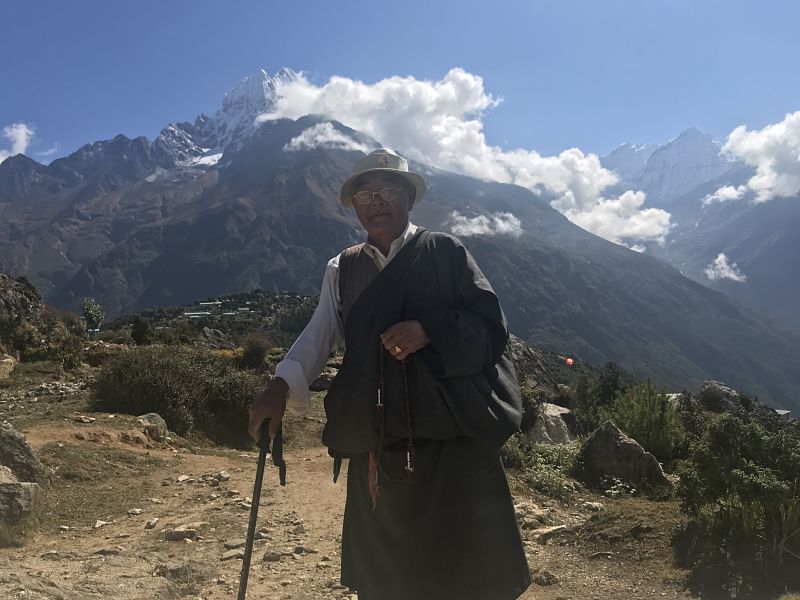
Kanchha’s morning walk around Namche
That’s how I met who the Nepali Times named The Last of the First, I allowed myself to use to headline this post.
Kanchha Sherpa is now 86 years old but was just 19 when he met Tenzing Norgay, the Sherpa who led the team of Sherpas who made it possible for Tenzing himself and Edmund Hillary to step on the highest peak on earth for the first time, the Everest (8,848 m).
The story of the Kanchha is a curious story that when he tells about his eyes shine infrequently on a person of his age. It made me excited.
In 1952, when a Swiss expedition passed through Namche on its way to Everest, Kancha Sherpa was impressed with the material and “glamour,” he says, of the mountaineers. So strong was his impression that, at the age of 19, he and three of his friends left home on foot for Darjeeling, India. There, a woman from Thame introduced them to Tenzing Norgay, who turned out to know his father, and was preparing the John Hunt and Edmund Hillary expedition to Everest, in 1953. Both things were decisive for him to be hired.
He had hitherto worked as a porter carrying loads of salt, corn or rice up and down the trail leading to Tibet through the Nangpa La Pass (5,800 m). He had no experience climbing mountains, but he learned quickly and gained the admiration and respect of the members of the expedition. Thus, after a few days, it was already transporting oxygen cylinders and other loads from the base camp to the high-altitude camps that were being set up, and so it reached the South Col (8,000 m).
Speaking of how high he had come, he told me “I was not particularly interested in reaching the top, but I could not have done so because we were not all authorized by the government of the country, to reach the top.”
For 20 years he continued to work as a porter for various expeditions until, in 1973, an avalanche killed 11 Sherpas, including his brother Jangbu. It was then when, at the insistence of his wife, he left the job. He continued for a few years as a guide for trekking groups and a few years later he opened the Nirvana Home lodge, in Namche, taking advantage of the increase in mountain tourism that erupted in the 1980s.
Thanks to it their children, two girls and two boys, were able to study and settled in Kathmandu and Denmark. Today, is his youngest son Tshering who, after living in the United States for 12 years, runs the lodge that Kanchha opened with his wife, and enjoys a very good reputation.
Kanchha currently spends half a year, summer and winter, in Kathmandu with his eldest daughter Dawa and in spring and autumn, which is when the weather is best, he lives in Namche, at the family lodge.
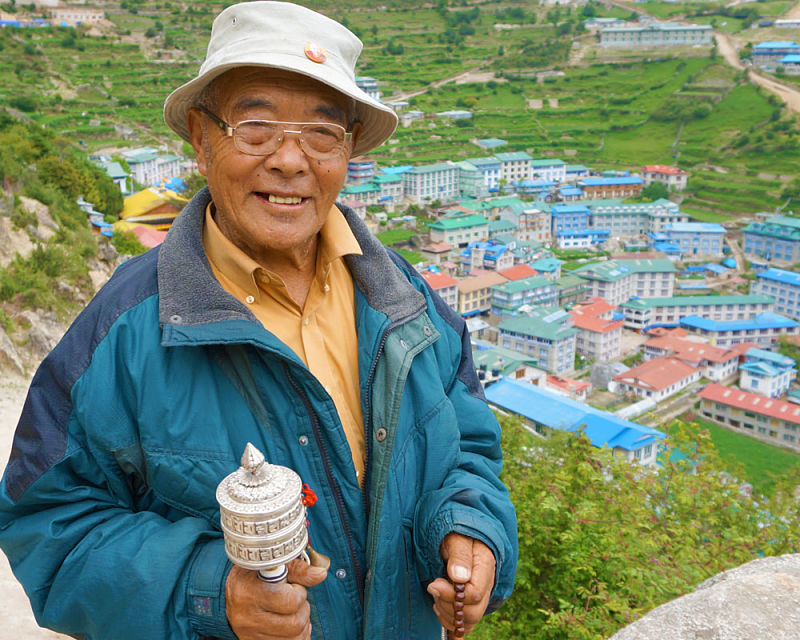
Kanchha with his prayer wheel and Namche in the background 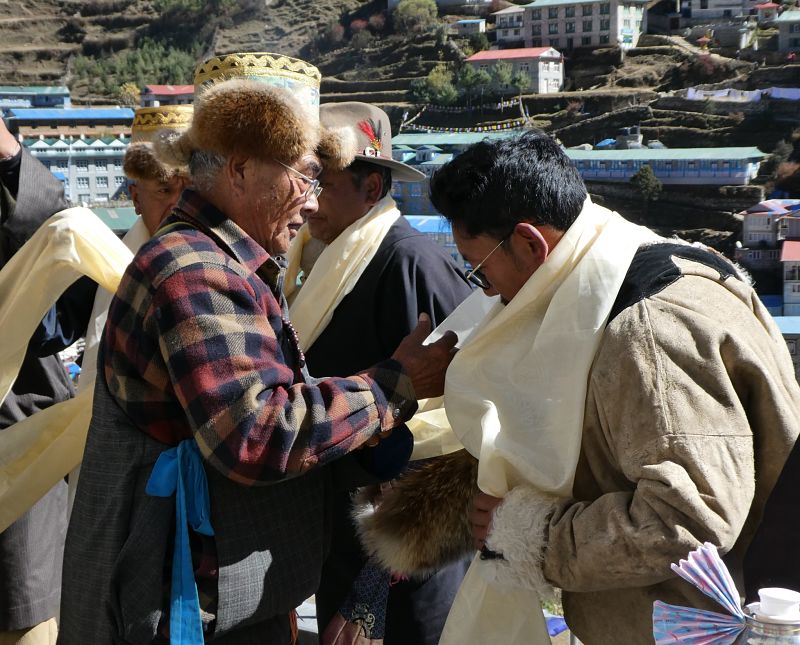
Losar Pulu festival (harvest celebration),in Namche
It is where we met a few days ago in his ascetic room, sitting in an armchair. When I walked in, he was spinning a mani lhakor (one of those little prayer wheels with engraved mantras). This fact inspired me the first question I asked him about how Buddhism had influenced his life. He told me “it has been and is my lifestyle because I am convinced that in this life at all times, we have to do the best, respect people and animals, and help people in need. This pleases the gods and is the right path for a future life (after reincarnation) in fullness.
We talked about Tenzing and Hillary. He told me that they were very close and that they trusted each other without limits and that they had said to each other, “If we live, we both live and if we die, we both die.” And they both lived. He also told me that they had both reached the top together at the same time. This makes no sense about the controversy that has so often arisen over who first stepped on the summit.
About Hillary he explains that the Sherpa people are very grateful to him for how he helped them for the rest of his life by creating the Himalayan Trust (https://himalayantrust.org ) to build schools and hospitals..
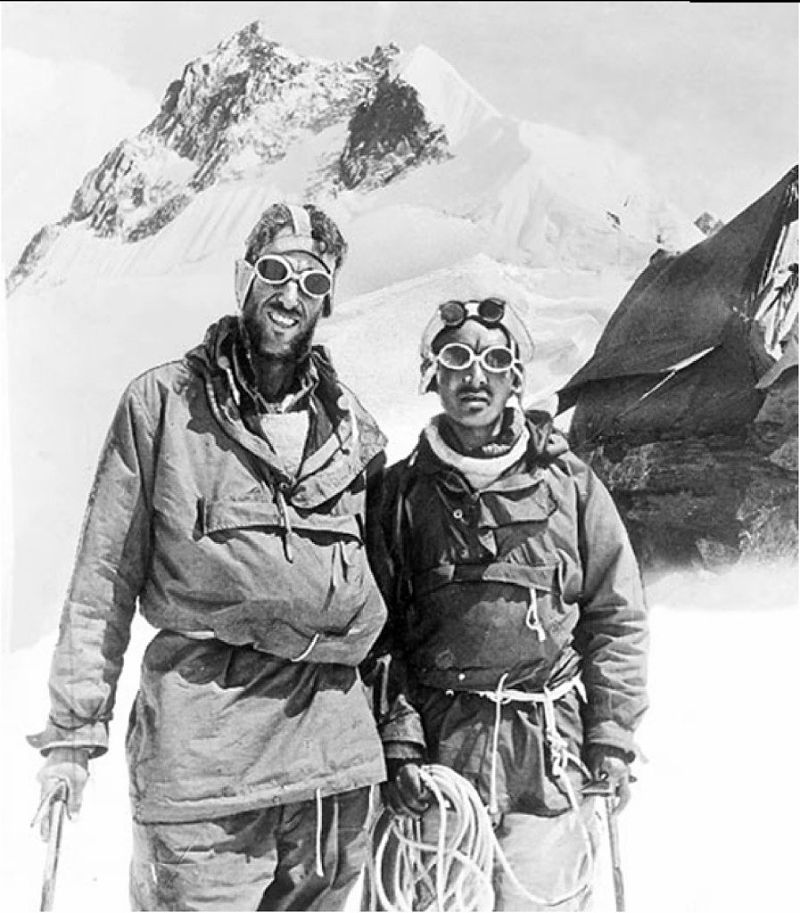
Hillary and Tenzing in 1953 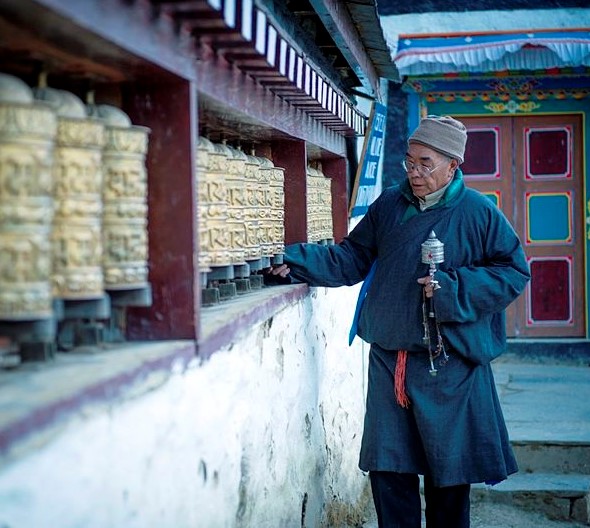
Kanchha in the Namche monastery
Perhaps it was this example that, 3 years ago, made him decide, with the help and commitment of his family, to create the Kanchha Sherpa Foundation (https://kanchhafoundation.org ) to help with education. of boys and girls. With some major donations and especially with the small donations they receive, they can help Namche and Thame schools and a school near Kathmandu, where they distribute backpacks for students, give annual awards to the best students and also distribute school supplies.
We ended our meeting by talking about whether, for the Sherpa people of these valleys, tourism has been positive or negative. His response was, “Tourism has been good for Sherpas,” but he immediately added, “but it’s bad for the gods.” And as if to illustrate, he said, “When I was a child, in the winter season the mountains were very white with snow. Now the peaks are black. That’s not good! “A wise summary of what climate change affects the Khumbu … and everywhere.